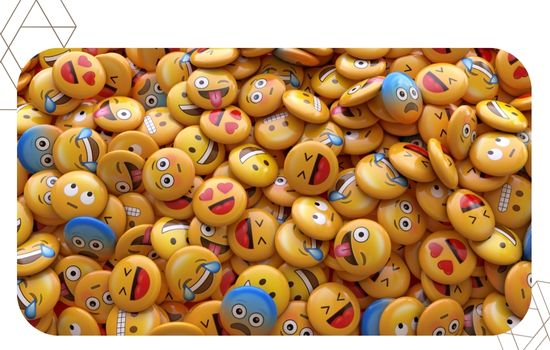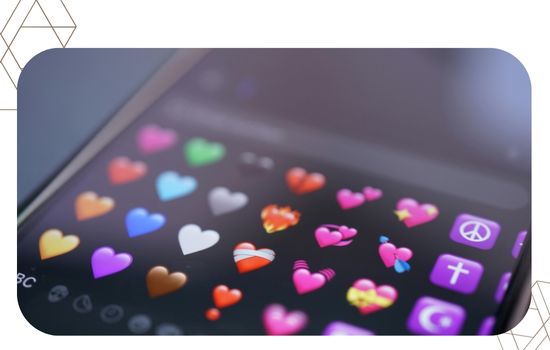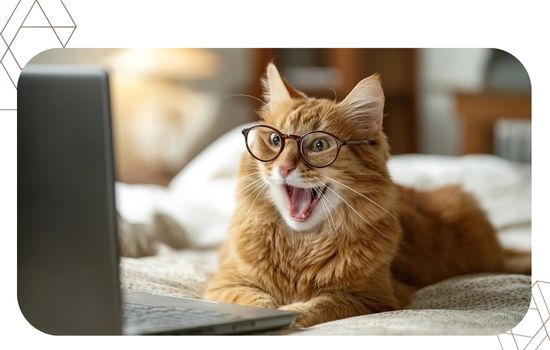Advertisements

Curiosities about the origin of emojis It is a topic that arouses interest in millions of users who use these small images to communicate daily.
You might think they're just digital drawings, but behind each symbol lies a fascinating story that connects Japanese culture to the way we communicate today—in texts, on social media, and even in emails.
In this article, you'll discover how the first emojis came to be, who created them, why they conquered the world, and the most striking facts about their evolution. You'll also find a comparison table, a real-life example of their influence, and, at the end, a FAQ section to answer common questions.
A quick look: what you'll learn
- The Japanese origin of the first emojis.
- The role of Shigetaka Kurita and NTT DoCoMo.
- The difference between emoticons and emojis.
- How emojis became standardized in Unicode.
- Current statistics on its global usage.
- Concrete examples of how they influence digital communication.
- Frequently asked questions to better understand its cultural impact.
The beginning in Japan: from necessity to innovation
In the late 1990s, text messaging in Japan was limited.
Alphanumeric characters didn't always convey emotions, making it difficult for people to express feelings on a screen.
Advertisements
In 1999, Shigetaka Kurita, a Japanese designer from the company NTT DoCoMo, created a set of 176 emojis for your i-mode service.
The idea was simple but visionary: add small 12x12 pixel illustrations that depicted emotions, objects, and activities from everyday life.
No one imagined that this experiment would become a universal language that, more than two decades later, millions of people use every day.
From emoticons to emojis: the big difference
Before Kurita, people were already using emoticons: combinations of characters like 🙂 or 🙁 to represent faces.
However, the Emojis brought color, design, and a new level of expressiveness.
An emoticon could provide a hint of humor, but an emoji managed to convey an immediate, visual emotion.
This difference allowed the format to quickly cross borders and become an essential part of digital language.
Standardization: Key to Your Global Success
In the early years, each tech company designed its own emojis.
This caused confusion: the same symbol could look different on different devices.
The solution came with the Inclusion of emojis in the Unicode Consortium in 2010, which guaranteed a global standard.
Thanks to this step, Apple, Google, and Microsoft began implementing them in their systems, ensuring that an emoji sent from an iPhone would be understood on an Android or any other platform.
A universal language in the digital age
Today, emojis have become a universal form of communication. Adobe Global Emoji Survey 2023 revealed that 92% of online users worldwide regularly use emojis in their digital conversations.
This figure shows that this is not a passing fad, but rather a language that breaks down cultural and linguistic barriers.
Table: Evolution of emojis
| Year | Key event | Impact |
|---|---|---|
| 1999 | Shigetaka Kurita designs 176 emojis | The concept is born |
| 2010 | Unicode includes emojis in its standard | Guaranteed global use |
| 2015 | Apple adds skin tone diversity | Social inclusion |
| 2020 | Addition of gender-neutral emojis | Greater representation |
| 2023 | 3,600+ emojis available in Unicode | Unlimited variety |

Read more: How new emojis are created
An everyday example of its impact
Think of a work conversation. If someone writes: “I reviewed the report”, may sound cold or distant. However, if you add a ✅ emoji, it conveys confidence and confirms the task in a positive way.
That little symbol changes the perception of the message, making it more human.
Diversity and inclusion: a step further
Another striking aspect in the history of emojis is the quest for greater representation.
Since 2015, different skin tones, gender-neutral options, and symbols representing diverse cultures, religions, and communities have been incorporated.
This process has allowed each person to find an emoji they can identify with, reinforcing the idea that emojis are not mere ornaments, but a reflection of today's society.
The emotional power behind emojis
Psychologists emphasize that emojis function as an extension of nonverbal communication.
Just as gestures or tone of voice add nuance to a face-to-face conversation, emojis play a similar role in the digital world.
Isn't it curious that a little red heart ❤️ can generate as much connection in a chat as a smile in real life? That's the power of this visual language.
Two original everyday examples
- A teacher uses emojis in the parent chat to make messages friendlier and easier to understand.
- A local business adds emojis to its social media posts to capture attention and differentiate itself from the competition.
An analogy to understand them better
We can compare emojis to spices in the kitchen. A basic dish can be nourishing, but with the right seasoning, it becomes a unique experience.
In the same way, a text can communicate, but emojis add flavor, emotion, and closeness to every interaction.
Challenges and controversies
Not everything has been positive. Some studies indicate that excessive emojis in professional contexts can detract from seriousness.
In addition, there are debates about how to represent certain cultural symbols without falling into stereotypes.
Still, the consensus is clear: the benefits outweigh the criticisms, provided they are used consciously and in a balanced way.
Conclusion: a language that is here to stay
Explore the curiosities about the origin of emojis It allows us to understand that these are not just simple digital icons, but rather a tool that has forever changed the way we communicate.
From their birth in Japan to their global expansion, through standardization and inclusion, emojis are now an inseparable part of digital human language.
Used intelligently, they can convey emotions, unite cultures, and enrich our daily conversations.
Read more: Key differences between 4G, 5G and 6G
Frequently asked questions about the origin of emojis
1. Who created the first emojis?
They were designed by Shigetaka Kurita in 1999, for the Japanese company NTT DoCoMo.
2. What is the difference between emoticon and emoji?
The emoticon uses characters like 🙂 while the emoji is a standardized graphic symbol.
3. How many emojis currently exist?
As of 2023, Unicode includes over 3,600 emojis, with new ones being added every year.
4. Are emojis the same on all devices?
Although the standard is universal, the design may vary depending on the platform (Apple, Android, Windows).
5. Why are emojis so popular?
Because they allow you to express emotions quickly and visually, breaking down language barriers.
6. What impact do they have on workplace communication?
Used well, they convey closeness and clarity; in excess, they can detract from professionalism.
7. Will emojis continue to evolve?
Yes, each Unicode update incorporates symbols that reflect new cultural and social realities.



